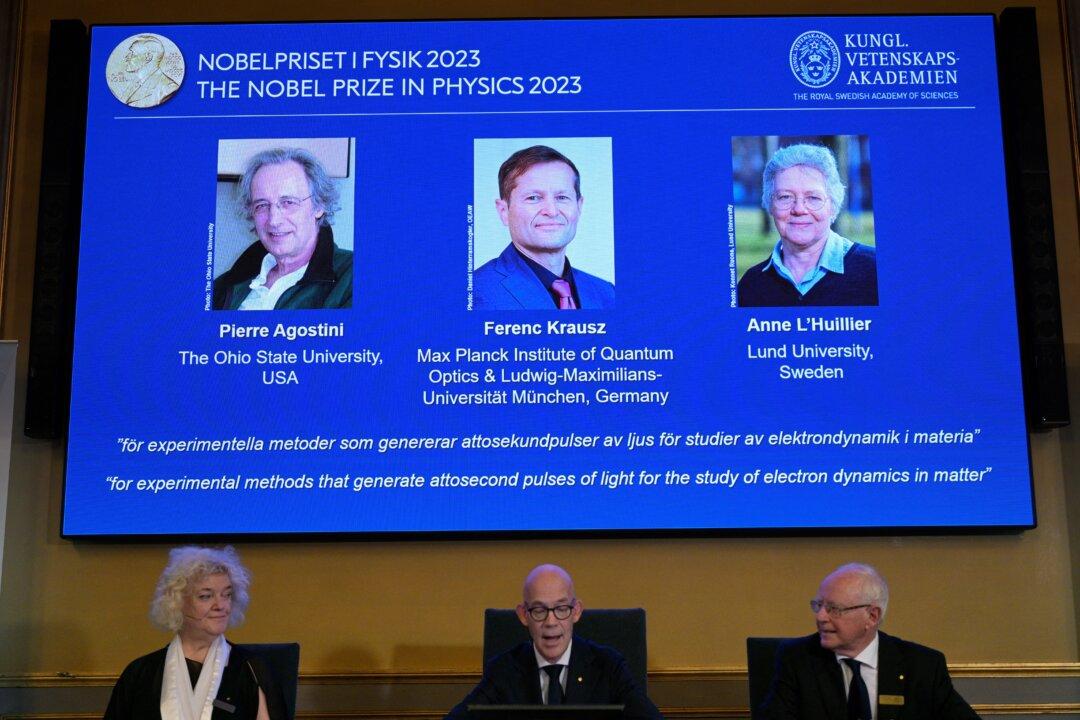STOCKHOLM—Scientists Pierre Agostini, Ferenc Krausz, and Anne L'Huillier won the 2023 Nobel Prize in Physics for creating ultra-short pulses of light that can give a snapshot of changes within atoms, potentially leading to better detection of disease.
The prize-awarding academy said their studies had given humanity new tools for exploring the movement of electrons inside atoms and molecules, a phenomenon that was long thought impossible to trace.





